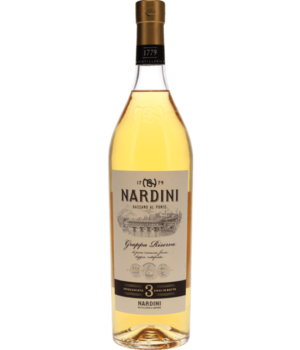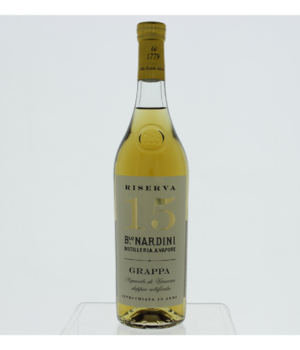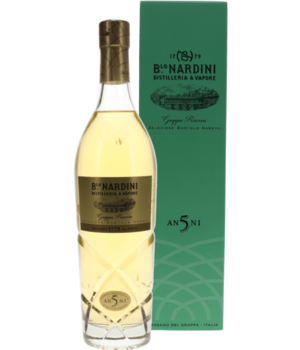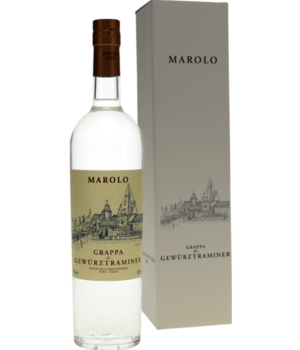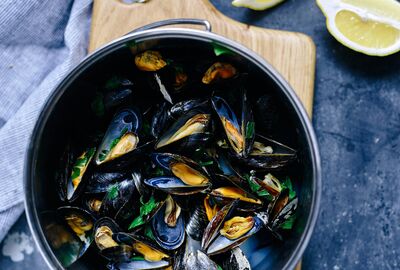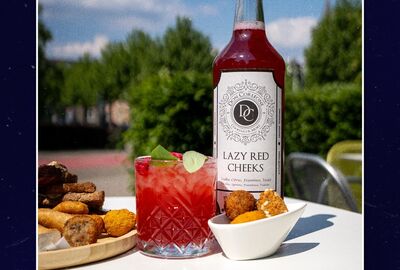
It's time again for a beginner's guide! Today, we highlight Italian Grappa. Often seen as the underdog among spirits, Grappa is sometimes written off as a rough drink that burns fiercely in the throat and has little character. But nothing could be further from the truth! Grappa has a rich history and a surprisingly versatile palette worth exploring.
What is Grappa?
Grappa is a distillate made from grape pulp, skins and seeds, also known as 'pomace', left over after making wine. So, simply explained, it is created from distillation of the remains of grapes after winemaking. The name 'grappa' is derived from the Latin word 'grappolus' meaning 'bunch of grapes'.
A little history
Grappa is originally from Italy and has a long history dating back to the Middle Ages. Farmers discovered in the 12th century that they could distil the remnants of wine production to make a strong drink, ideal for the cold winters. During the Renaissance, distillers refined their techniques, and grappa began to enjoy wider popularity, especially in northern Italy. In the 19th century, grappa production was modernised, and the drink became a commercial product. Today, grappa is a premium product exported worldwide. Thanks to strict legislation, the name 'grappa' can only be used for distillates made in Italy or the Italian part of Switzerland from Italian pomace.
The different types of grappa
Like other spirits, grappa has a wide range of styles and flavours, depending on the grape variety and production method. Some of the most common types are:
- Bianca (white grappa): This is grappa that is bottled fairly shortly after production and is not aged. This gives this type of grappa a bright colour. It often has an intense, sharp flavour.
- Invecchiata* (Aged Grappa): This grappa matures for at least 12 months in wooden barrels, giving it a deeper, softer flavour and an amber hue.
* This term is derived from the Italian word for 'old' = vecchia/vecchio
- Aromatica: This Grappa is made from aromatic grape varieties such as Moscato bianco or Gewürztraminer. As the name might suggest, this grappa has a distinct aroma and flavour profile.
- Riserva: This is a premium grappa that has been aged for more than 18 months and often has a complex flavour profile, with notes of vanilla, caramel and spices.
How do you drink Grappa?
If you ask Italians for advice, they will probably tell you that Grappa is really drunk as a digestif. Grappa is often drunk after a heavy meal to help with the digestion process. It is usually served in small glasses and can be enjoyed either pure or paired with coffee.
However, Scott Rosenbaum, a certified instructor from The Wine & Spirit Education Trust in the US, has a different view: the best way to enjoy grappa depends on your personal taste preference. "If you're not a fan of tequila or gin pure, chances are you won't like grappa when you drink it pure either," he says. For cocktail lovers, grappa offers many possibilities. For example, you can use grappa instead of vodka in an Espresso Martini for a unique twist. Rosenbaum also recommends trying aged grappa in a Sidecar, or aromatic grappa in a Negroni instead of gin.
Here are some useful tips to enjoy grappa to the fullest:
- Grappa is usually served at room temperature, but some people prefer a slightly chilled grappa.
- It is best to serve Grappa in a small tulip-shaped glass or in a special grappa glass. This helps concentrate the aromas and offers a better taste experience.
- Take small sips and leave the grappa in your mouth for a while before swallowing so you can appreciate the complex flavours.
Which Grappa do we recommend?
In Italy, there used to be around 100,000 (!) distillers producing Grappa, but today only a hundred remain. A few brands (or family names) play an important role in the world of Grappa. Two of these leading brands are Nardini and Marolo.
Nardini
Nardini, founded in 1779, is Italy's oldest and largest grappa distillery. Located in Bassano del Grappa, north of Lake Garda, Verona, and Venice, Nardini is known for its high-quality products. Nardini's standard range is carefully curated with a blend of 80% red grapes, including Cabernet Sauvignon and Merlot, and 20% white grapes, such as Pinot Blanc and Tokaj Friulano. This combination creates a refined and versatile grappa that reflects both tradition and quality.
Nardini's Selezione Bartolo Nardini (SBN) range is a luxury collection of grappas made only from red grapes. This range is a step above the standard range and offers extra refinement. Except for one, the Extrafina, all grappas in this range are aged in high-quality wood, which gives them a rich, layered flavour. The bottles are easily identified by the stylish embossing. Unlike standard grappas, those in the SBN range never have exactly 40%, 50% or 60% alcohol. This gives each of these premium grappas a unique twist.
Marolo
Marolo, founded in 1977, actually came into being by accident. Initially, the Marolo family only produced herbal liqueurs and distilled them in their garage. It was only in 1991 that father Paolo Marolo decided to quit his job as a teacher to devote himself entirely to making grappa.
What makes Marolo special is their focus on craftsmanship and quality. This grappa is especially for true connoisseurs and drinkers who like to go off the beaten track. If you are looking for an authentic and unique grappa experience, Marolo is a perfect choice.

Marketing • Blogger
As a creative jack-of-all-trades in the marketing world, I also bring that imaginative flair to my drink choices. Whether on a night out, sunny vacation or social gathering with girlfriends, I'm always in my element with a refreshing cocktail in hand. Cocktails have stolen my heart because of the endless possibilities to experiment and explore. My favorite cocktail of the moment is the "Lazy Red Cheeks"! A delicious cocktail using vodka as a base. I love vodka because it mixes perfectly with non-alcoholic drinks. My favorite spirit? Rum!

